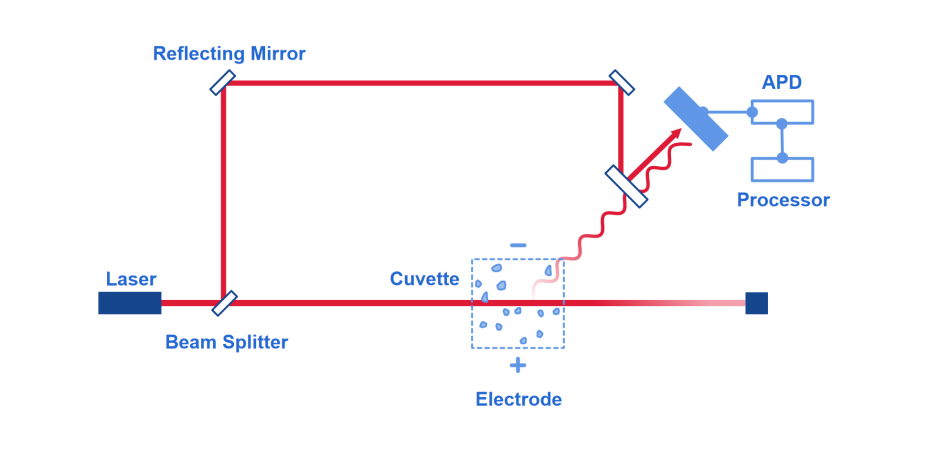What is electrophoretic light scattering(ELS)?
2023-05-29WIKI
Electrophoretic light scattering (ELS) is a light scattering technique used to measure the zeta potential of suspended particles in solution based on Doppler shifts in scattered light.

The laser beam is split through the beam splitter into an incident beam and a reference beam. The sample particles are illuminated by the incident beam, while the reference beam passes through the PZT, which provides the piezoelectric effect, and reflecting mirror and combines with the scattered light detected at the forward angle of 12°. Charged particles experience electrophoresis when subjected to an electric field. As a consequence, the frequency of the scattered light shifts compared to that of the incident light due to the Doppler effect. Moreover, the magnitude of the frequency shift correlates to the electrophoretic velocity.

A detector is set forward to detect the scattering signals, with which the frequency shift and the electrophoretic mobility are obtained. By using Henry's equation, the zeta potential and its distribution can be obtained based on electrophoretic mobility.




